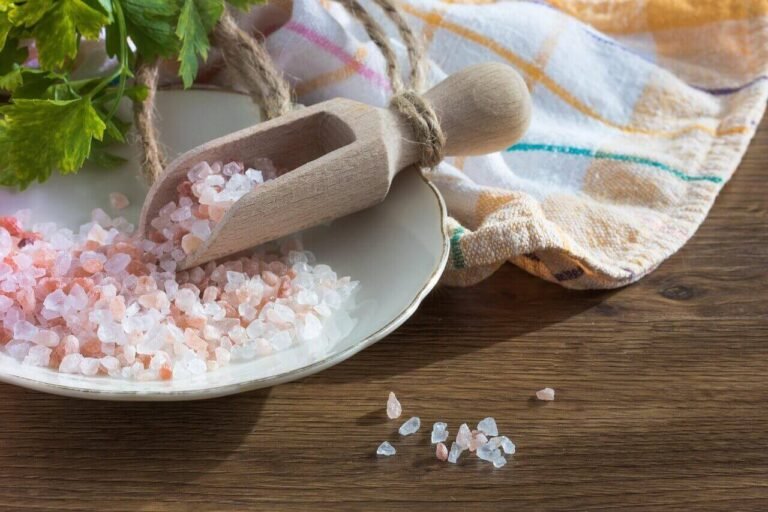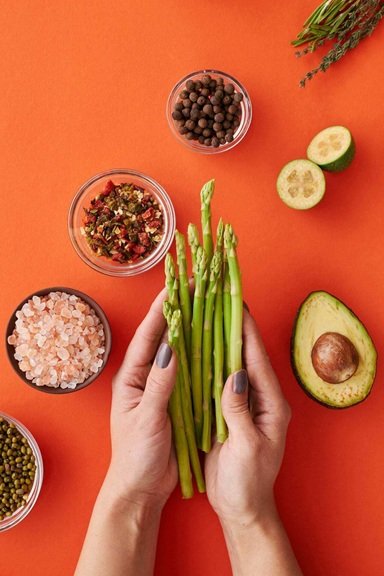In a world obsessed with flavour and wellness, one pink crystal has taken centre stage, and it’s not sugar. We are now going to grasp how to use pink Himalayan salt in food, so this mildly flavoured salt would not go to waste.
According to a 2024 market report by Statista, global sales of pink Himalayan salt surged past $720 million. That’s not a trend, that’s traction. From Michelin star chefs to everyday home cooks, the culinary world is embracing pink Himalayan salt not just for its pastel hue, but for its mineral rich profile and nuanced taste.
But let’s pause for a moment. Despite it’s rising popularity, most people use pink Himalayan salt incorrectly. Yes, you red that right. It’s beautiful, sure. It’s even marketed as “healthier.” But if you’re simply replacing your table salt with pink salt across the board, you’re not unlocking it’s true potential.
Let’s change that. This guide will help you use pink Himalayan salt with intention from cooking and finishing to curing and presentation. Whether you’re plating for aesthetic or optimising flavour at scale, we’re diving deep into what makes this salt so powerful when used right, and when it’s better left on the shelf.

Mined from the ancient salt deposits of Khewra Salt Mine in Pakistan, Himalayan salt gets its signature colour from trace minerals, primarily iron oxide. It’s composed of up to 84 different minerals and elements, including calcium, potassium and magnesium. These minerals contribute subtle complexities in flavour and colour. though not drastically in nutrition (despite common marketing claims).
Pink Himalayan salt in typically sold in large granules or blocks, giving it coarser texture than regular table salt. This matters. Texture affects how salt dissolves and interact with food.
For example: Use coarse flakes for finishing meats, roasted vegetables, or even dessert like dark chocolate truffles. The crunch provides a contrast that makes flavours pop.
Avoid using in baking or precision recipes where uniform salt dispersion is key. The granules dissolve inconsistently, which can throw off both taste and texture. In these cases, use fine kosher or sea salt instead.
Pro tip: Crush coarse pink salt in mortar and pestle or spice grinder if you want more control over grain size in rubs or marinades.
You may be tempted to use pink salt for pasta water or boiling vegetable. Don’t.
Here’s why, In water, the unique mineral profile, and therefore the subtle flavour is lost. At that point, you’re essentially throwing expensive salt down the drain. Instead save pink salt for moments where it can stay on the plate. Use it in dry rubs, compound butters, finishing salts or seasoning blends where its flavour and texture matter.
Pink Himalayan salt is excellent for curing meats, thanks to its low moisture content and mineral content. While it shouldn’t be confused with curing salt #1 or #2 (which contain sodium nitrate), pink salt can be used in traditional dry-curing or gravlax style application to draw out moisture and preserve proteins.
Actionable tip: Mix pink salt with sugar, dill, and citrus zest to create a dry cure for salmon or trout. Leave it in the fridge, weighted, for 24-48 hours. Rinse, slice thin and serve chilled.
Pink Himalayan salt makes a great base for infused blends. It’s coarse crystals hold moisture well, which helps when infusing with herbs, citrus or smoke.
Try this: Combine pink salt with dried rosemary, lemon zest and cracked pepper for a bright finishing salt. Or smoke pink salt over wood chips (applewood or other) to add depth to grilled dishes.
Want to make a visual impact and enhance flavour at the same time? Pink Himalayan salt blocks are slabs of compressed salt that can be heated or chilled and used to cook, serve or cure food. They pass on a subtle saltiness while also acting as a thermal conductor.
How to use it:
Always cool slowly and clean without soap to preserve the surface. A word of caution. Salt blocks can crack under rapid temperature changes. Follow manufacturer instructions carefully and never place a cold block on direct heat,
Here’s where the professional edge comes in. Know when to not use it.
Himalayan salt has a milder flavour than kosher or sea salt, meaning you often need more to reach the same saltiness. The best practice it to use it for finishing, plating or simple preparations (like grilled vegetables or raw dishes. For high volume or technical recipes for example making sauces or soups), stick with tried and true sea or kosher salt and measure by weight.
Pink Himalayan salt is more than a pretty face. When used with intention, it becomes a dynamic culinary tool. One that enhances texture, amplifies presentation and delivers subtle mineral complexity that regular salt simply can’t.
